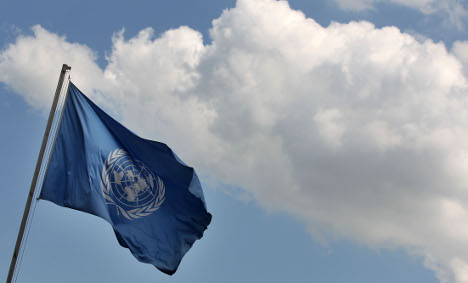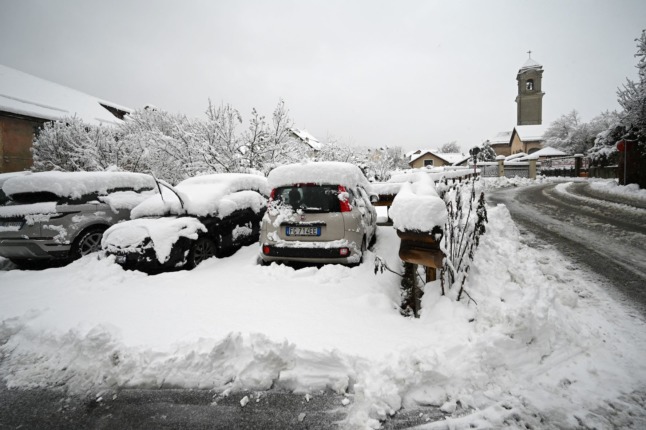In West Africa, 22,000 refugees have fled post-election violence in the Ivory Coast, while the United Nations warns of a looming humanitarian crisis. Further east, another crisis is brewing as southern Sudan prepares for a January 9 referendum on secession.
They are just two flashpoints in a dangerous world that Germany will have to help quell for the next two years as a member of the UN Security Council. Germany takes its temporary seat this week touting an ambitious agenda, including human rights, climate change and – the big prize – reform of the council itself.
Some of this will end in disappointment, foreign policy experts warn. But there are still useful things Germany can achieve. However complicated, unwieldy and out-of-date the structure of the Security Council may seem, it is still the international body where collective decisions on global security are made and carried out. And there is value being on the inside of that.
“It’s always difficult to have an agenda you can push, especially when you have problems that pop up like the one now in the Ivory Coast,” said David Bosold, an analyst at the German Council on Foreign Relations.
“There’s a lot of daily work, so you shouldn’t have too many great expectations for the next two years. They can do it, but there are so many dynamics in there, it’s hard to forecast how that plays out.”
Arms control and climate change
German Foreign Minister Guido Westerwelle has made clear nuclear disarmament will remain a priority for Berlin. But some of Germany’s stated aims, such as raising climate change to the status of a global security issue, are plain unrealistic, some experts say.
“I’m very sceptical about that,” said Christian Schaller from the German Institute for International and Security Affairs in Berlin.
“Issues like climate change, environmental problems and distribution of water are all topics that are traditionally viewed by members of the UN as belonging to the development area. The history of UN Security Council practice shows that it has always been very difficult to introduce such topics.”
For all that, the Security Council is an important body to which Germany ought to be making a contribution, the analysts say. Made up of five permanent members with veto powers – the United States, Britain, France, Russia and China – and 10 rotating members elected for a period of two years, the council is the organ of the UN responsible for maintaining global peace and security.
It has, for instance, been fairly effective in launching peace-keeping operations in Africa. While “club governance” by groups such as the G8, the G20, APEC and ASEAN has become more common on issues like the recent financial crisis, none of these groups could fill the role played by the Security Council, Schaller says.
“That is clear; no other organisation can replace that,” he said. “So there is value in being on the council and shaping the future of the council.”
German values
Germany can bring its values to the UN – multilateral promotion of the rule of law and human rights, peace-building and peace consolidation, protection of civilians and the primacy of diplomacy before armed intervention.
“Germany feels ready to take greater responsibility in Security Council matters,” Schaller said. “Especially if you are contributing financially and in other ways, you want to be in a position to decide the key questions of where that money is spent.”
As the third-highest contributor to the UN, Germany paid €130 million to the organisation in 2010 – about 8 percent of the total budget. It does, on the other hand, contribute relatively few of the actual “blue helmet” troops, Bosold points out – about 10 times fewer than say Italy and France. A challenge ahead for Germany will be to contribute more of these troops to boost its leverage in persuading other countries to send troops.
“That would benefit their reputation. If a crisis occurs, they would need to deploy at least a kind of symbolic contingent of troops. That’s a way to demonstrate, ‘We’re on the Security Council.’”
Germany’s biggest goal for the next two years will be helping push along what many impartial observers agree is much needed reform, particularly changing the regional representation to reflect the 21st century.
Angling for a permanent seat
Brazil and India are obvious candidates for more permanent membership of the council – and both are joining Germany this week as rotating members. Together, the three will all be pushing for reform. The “P5” club of veto-holders, critics say, reflects an outdated, post-World War II structure.
Opinion seems to be divided on Germany’s chance of a permanent seat itself. Many, including Bosold, point out that Europe is already heavily represented. Schaller rates Germany’s chances as “not too bad” of at least getting some kind of more permanent representation.
Germany is generally thought to have done a good job in 2003 and 2004 – the last time it was on the council. During a difficult period surrounding the Iraq war and US attempts to get UN Security Council approval for the invasion, Germany acquitted itself well.
“They are a very credible player on the ground in New York,” Schaller said. “Germany has some clear support from many parts of the world. They are very constructive and they are a natural candidate.”
Even if permanent membership is ultimately out of reach, it is still in Germany’s interest to shape the debate now, according to Bosold.
“They have a national interest in it because power is moving away from Europe,” he said. “And if you have a way of shaping the framework in which new decisions are taking place, that’s an advantage … over seeing countries around you forming some new arrangement where you don’t have any influence.”




 Please whitelist us to continue reading.
Please whitelist us to continue reading.
Member comments